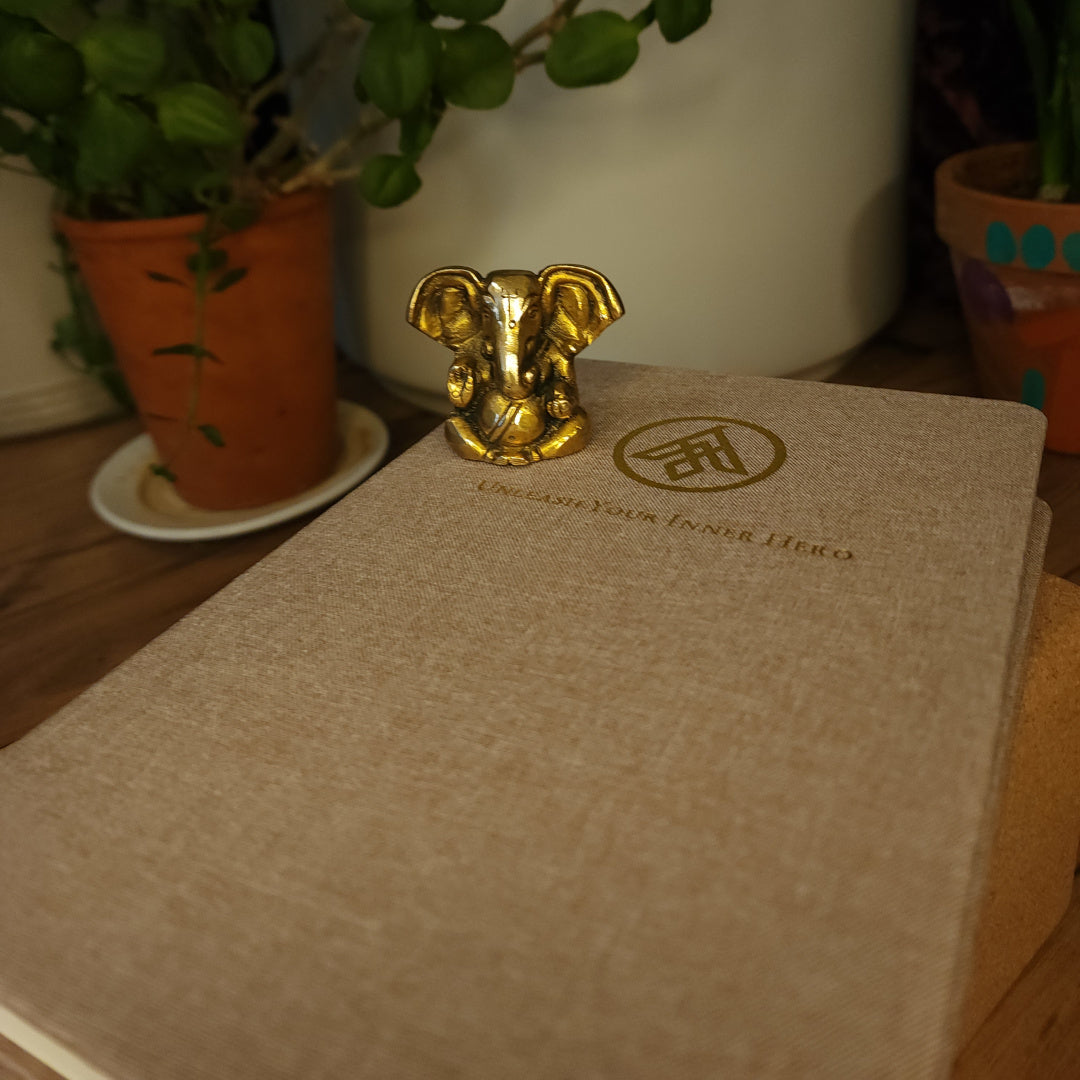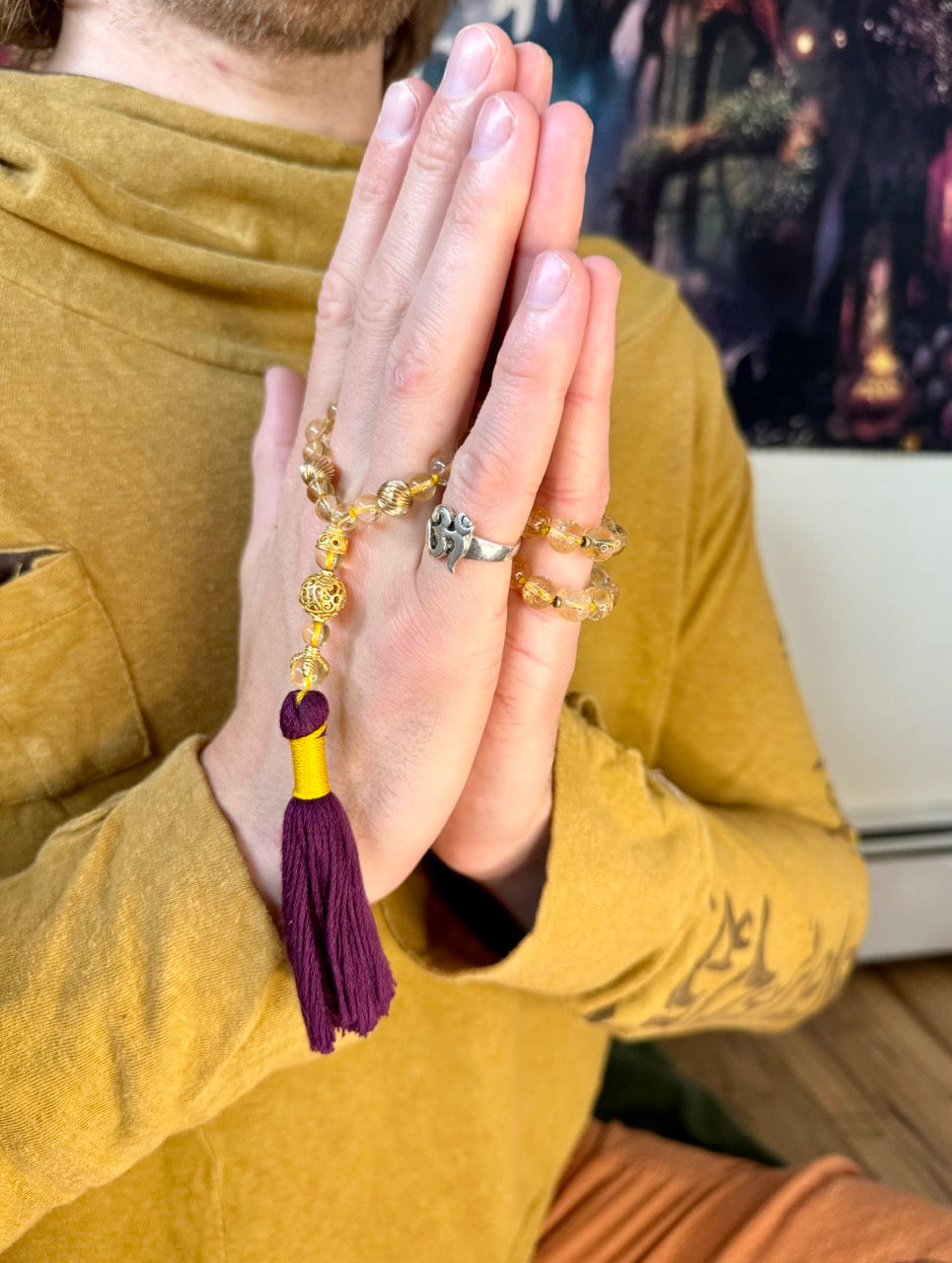Mudra (Seal)
Jack UtermoehlShare
Mudra is a Sanskrit term meaning “seal,” “gesture,” or “mark.”
In yogic and tantric traditions, mudras are intentional movements or positions of the hands, body, eyes, or breath used to influence energy flow, focus the mind, and deepen meditation.
Mudras act like energetic keys, subtle tools that help unlock states of awareness, regulate prana, and create connection between the physical and subtle bodies.
Etymology and Meaning
Sanskrit Spelling: मुद्रा
Root Word: "Mud" (to delight or give joy) + "Ra" (that which bestows)
Translation Variations: Seal, gesture, energetic circuit, sacred symbol
Pronunciation: Mudrā [MOO-drah]
While commonly associated with hand positions, mudras also include gestures of the eyes (drishti), the tongue (khechari), and even full-body arrangements used in tantric or kriya practices.
Types of Mudra
-
- Hasta Mudra: Hand gestures such as Chin mudra (gesture of consciousness) or Anjali mudra (gesture of reverence)
- Mana Mudra: Gestures involving the head; eyes, ears, nose, or tongue to direct awareness inward
- Kaya Mudra: Whole-body positions like Viparita Karani mudra (inverted gesture) sometimes called legs-up-the-wall posture.
- Bandha Mudra: Locks such as Mula bandha, combining muscular contraction with energy control
- Adhara Mudra: Root-supporting gestures that stabilize pranic flow in the pelvic floor
Symbolism and Elements
Element: Varies by mudra; for example, Jnana mudra balances air, while Prithvi mudra activates earth
Chakra Activation: Specific mudras support or awaken different chakras
Energetic Impact: Mudras act as seals that lock or redirect energy patterns to restore balance or amplify intention
Elevate Your Yoga Journey
A yoga journal helps you deepen your practice, track your progress, and reflect on your spiritual journey. Cultivate mindfulness and intention with every entry.
Practical Application
In Yoga and Meditation
- Use mudras during seated meditation to calm the nervous system or activate focus
- Incorporate mudras into asana practice for symbolic or energetic support
- Hold mudras during pranayama to deepen breath awareness and channel prana
In Daily Life
- Bring hands to Anjali mudra before meals, during prayer, or to offer gratitude
- Use grounding mudras (like Prithvi mudra) during moments of stress or anxiety
- Pair a chosen mudra with your morning breath or affirmation practice
Quotes and Wisdom
"Your hands are extensions of your heart. Where they rest, energy flows."
"Mudra is stillness in form. In a single gesture, it tells a whole story."
Modern Relevance
In our fast-paced, overstimulated world, mudras offer an immediate return to presence.
They are accessible, portable, and don’t require flexibility or equipment.
As tools for embodiment, ritual, and intention-setting, mudras are as relevant now as they were in ancient times, helping us connect breath to body, mind to heart, and spirit to practice.
Related Concepts
Prana: Life force energy that mudras help direct or stabilize
Drishti: Eye gazes that act like mudras for attention
Bhakti: Mudras are often used in devotional rituals and mantra practice
How to Work with Mudra
Mindset: Treat mudras as sacred, small gestures that can hold great depth
Actions: Choose one or two mudras to practice daily with breath or meditation
Reflection: Ask, “What energy do I want to cultivate and which gesture resonates with that intention?”
Suggested Reading
- The Best Mudra Books by Jack Utermoehl
- The Best Mudra Decks by Jack Utermoehl
- Mudras for Healing and Transformation by Joseph and Lilian LePage
- Asana, Pranayama, Mudra, Bandha by Swami Satyananda Saraswati
- The Healing Power of Mudras by Rajendar Menen
Conclusion
Mudra is the language of the subtle body, silent yet powerful.
Whether held in stillness or woven into movement, mudras speak directly to the inner world.
They are reminders that transformation doesn’t always require motion. Sometimes, it begins with a gesture.







